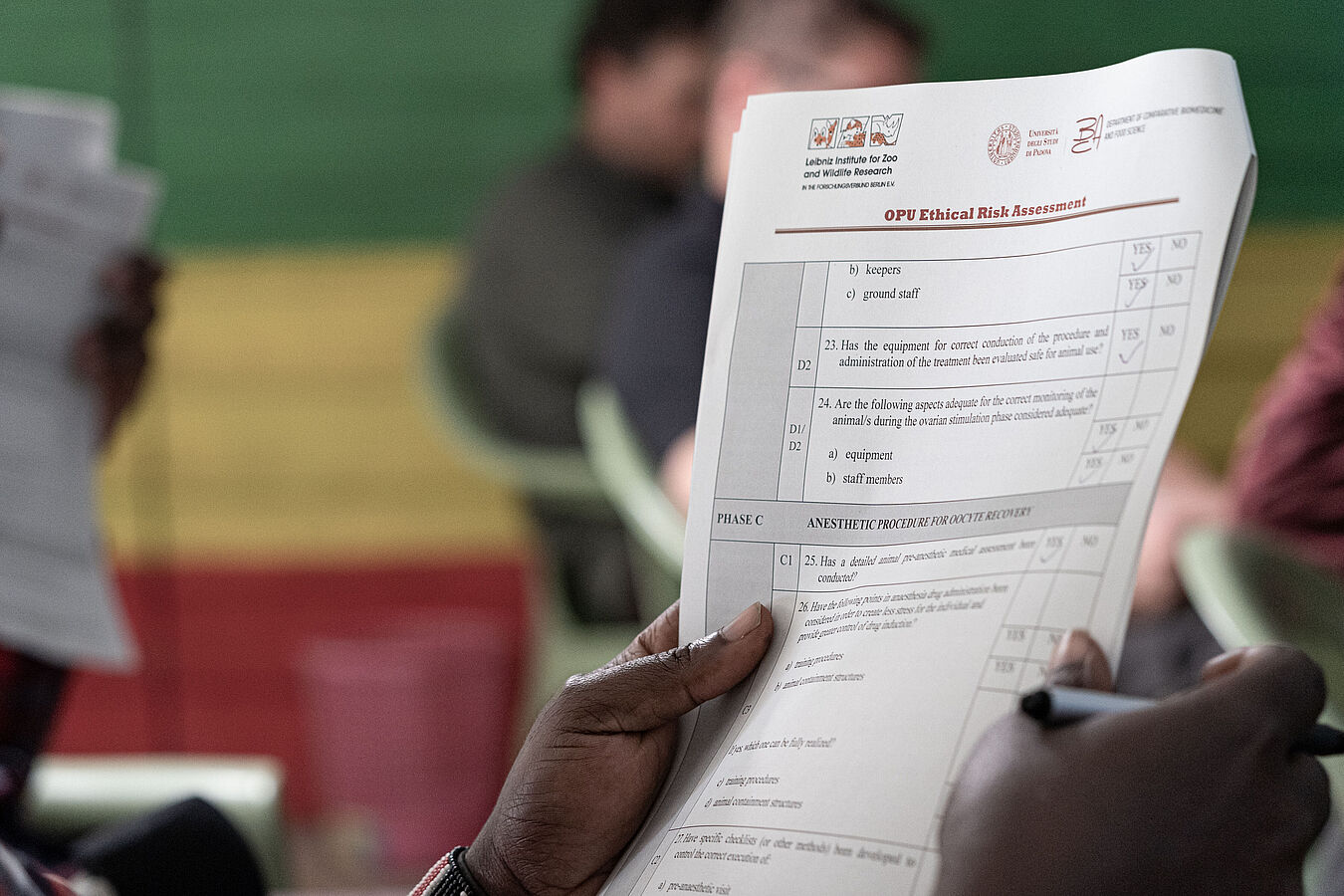The BioRescue consortium develops and applies new technological approaches as a last straw for saving critically endangered species such as the northern white rhinoceros. Advanced Assisted Reproductive Technologies (aART) push the boundaries of what can be done to create new offspring. Consequently, new ethical questions regarding the application of these tools arise and need to be answered, and relevant animal welfare issues to be addressed. In order to ensure that the ethical risk assessment matches the technological breakthrough with aART, the BioRescue consortium developed and applies the “ETHAS” tool, an ethical self-assessment tool explicitly designed for assisting oocyte collections, in vitro fertilizations, embryo transfers and further procedures of the BioRescue consortium. ETHAS was developed under the leadership of Padua University and is described in detail in a new paper published in the scientific journal “Animals”.
From the very beginning of conceptualising the BMBF sponsored BioRescue programme, it was obvious that – if successful – the newly developed technologies for assisted reproduction would require a solid ethical and animal welfare framework to be applied for species conservation. “If we have new things we can do, it is our duty to also consider what we should do and how we can apply them in a way that truly respects animal welfare, risk considerations, the safety of the people involved and the quality of the procedures”, says BioRescue head Prof Thomas Hildebrandt from the German Leibniz Institute for Zoo and Wildlife Research (Leibniz-IZW). These ethical considerations have been a pivotal pillar of the programme’s work. Prof Barbara de Mori and her team from the Ethics Laboratory for Veterinary Medicine, Conservation and Animal Welfare at the University of Padua in Italy have continuously monitored and evaluated every procedure the BioRescue team has conducted since the beginning of the scientific rescue programme in 2019. “We soon realised that for assisted reproduction technologies as they are developed and applied in the BioRescue programme no ethical assessment tools existed”, explains de Mori. “As the reproduction specialists had to design new intervention approaches, we were able to develop and apply in parallel a new robust and solid ethical risk assessment framework.” ETHAS is the result, aiming at raising the ethical standards of the application of aART in general and setting the bar as high as possible for the BioRescue procedures.
ETHAS is an ethical self-assessment tool explicitly designed to assess ARTs in mammalian conservation breeding programmes. It consists of two checklists, the “Ethical Evaluation Sheet” and the “Ethical Risk Assessment”. The ETHAS checklists merge risk analysis – based on a combination of traditional risk assessment, aspects of animal welfare and the assessment of specific ethical risks – with an ethical analysis to assess the ethical acceptability of the procedures under assessment. “ETHAS underwent several applications in different conditions (zoos and semi-captive management) that allowed the review, improvement and refinement of the tool in an iterative procedure via the shared work between ethicists and reproduction experts”, de Mori explains the process of developing the tool, in which also specialists from the Kenya Wildlife Service and the Avantea Laboratory in Italy were involved. “We are committed to the development of high level endangered species welfare and ethical standards even as we works against endangered species extinction and recovery”, says Dr Patrick Omondi from Kenya Wildlife Service.
The framework not only ensures that procedures are conducted to the highest standards of animal welfare and safety, it is also a crucial tool for determining how valuable and risky future procedures might be which built on already established ones. “For example, all risks that have been taken to create a northern white rhino embryo now accumulate in this embryo”, explains Pierfrancesco Biasetti, member of the Padua University Ethics Laboratory and of Leibniz-IZW. “This means they have an exceptionally high conservation value and decisions about transferring them to create new offspring must reflect this value.”
Having a robust risk assessment tool at hand allows the consortium to make evidence-based, well-reasoned decisions. “We are well aware of the fact that pushing technologies for conservation purposes to the limit can raise questions with more than one valid answer”, Hildebrandt and de Mori sum up. “Depending on personal perspectives there can be different views as to what is an acceptable risk for a procedure and what is an ethically flawless approach for species conservation. With ETHAS we respect these challenges, consider every ethical and risk-related aspect of our procedures and ultimately work towards our goal of preventing the extinction of the northern white rhino”.
The accompanying ethical scientific work is supported by Merck and also focuses on questions from stakeholders and the general public. “Applying these new technologies inevitably raises new questions also in the public and in stakeholder-driven discourses on saving biodiversity”, says Steven Seet, science communicator at the Leibniz-IZW. “These include questions such as ‘is it worth spending public money to save single wildlife species?’ or ‘if we have technologies and methods to save species from the brink of extinction, do we still have to care about nature?’.”
For direct exchange with different target groups, the consortium has set up the website www.biorescue.org, where supporters, stakeholders and interested parties can get in touch.


